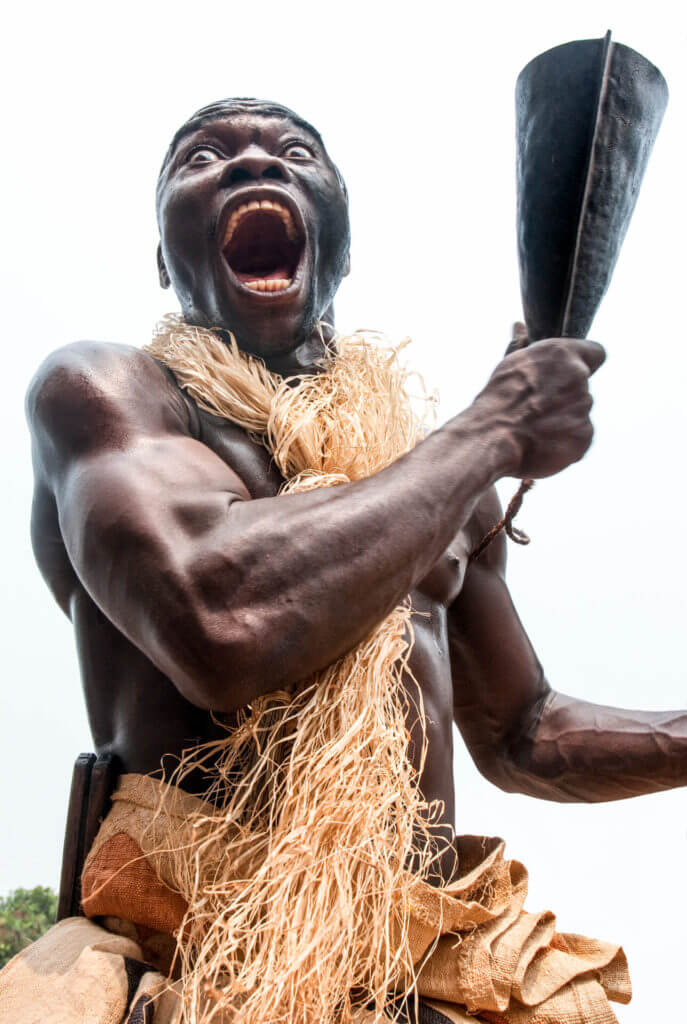Mboom The Sky Father
Kuba Kingdom
Gaining access to the Kuba Kingdom in the vast Democratic Republic of Congo was extremely challenging. Five years of attempts had failed. At last, in 2012, we met Prince Guy Kwete, son of the Kuba King, Kot a Mbweeky lll, and one of the sons in line to inherit his father’s throne.
Prince Kwete admired our dedication to record the cultures of Africa and invited us to document his kingdom. He persuaded the Keepers of the Sacred Forest to perform a wide range of rituals. With Kwete we travelled across Kubaland focusing on ceremonies which could only be seen in the presence of royalty.
At each village, Kwete was greeted by hundreds of excited villagers dressed in magnificent palm fibre rafia skirts. Out of the sacred forest came an explosive procession of wild and elaborate masks, some not having been seen for 4 decades. One at a time, the masked men representing powerful Kuba deities, bowed to the ground for the Prince.
Elders wearing voluminous skirts of rafia textiles, up to 6 meters in length, danced to display their magnificent costumes. Since the 15th century, Kuba textiles, renowned for their craftsmanship and design, were so valued that many were traded as currency across central Africa.
Our photos confirmed that over the centuries the impressive range of artistic expression of sculptural as well as the decorative arts in the Kuba Kingdom had produced one of the richest and most powerful cultures on the continent.



